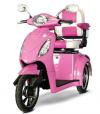Tesla Autopilot Classic Looney Toon Wall Test Failed

Tesla Autopilot Classic Looney Toon Wall Test Failed
Self-driving cars continue to grapple with major challenges, particularly in handling unexpected scenarios to ensure road safety. One of the more unusual hurdles involves a deceptive fake wall, mimicking an open road, aimed at tricking autonomous systems into making critical errors.
A Looney Tunes-Inspired Experiment
Although such artificial barriers are rare in real-world driving, Mark Rober, a former NASA engineer and well-known YouTuber, decided to test how self-driving technology responds to such scenarios. In his latest video titled “Can You Fool a Self-Driving Car?”, Rober conducted an experiment comparing two distinct autonomous driving technologies: Tesla’s camera-based system and another company’s LiDAR-powered solution. These tests culminated in a scenario reminiscent of Wile E. Coyote’s classic attempts to deceive the Road Runner.
Real-World Performance Tests
To evaluate their effectiveness, both systems underwent several controlled trials:
Test Scenario | Tesla Autopilot (Camera-Based) | LiDAR-Equipped System |
Fake Wall at 40 MPH | Crashed through the wall | Stopped before impact |
Child Dummy in Clear Visibility | Successfully avoided collision | Successfully avoided collision |
Child Dummy in Fog or Water Spray | Failed to stop, hit the dummy | Detected and stopped in time |
The Tesla Autopilot system failed three out of six trials, raising concerns over its reliability in low-visibility environments. In contrast, the LiDAR system consistently detected obstacles, reinforcing its advantages in challenging conditions.
The Debate Over Tesla’s Camera-Only Approach
Tesla decision to rely exclusively on camera-based perception technology has sparked debate within the autonomous vehicle industry. Advocates argue that removing LiDAR reduces costs and allows for more scalable innovation. However, critics emphasize that real-world data continues to highlight LiDAR’s superior ability to detect obstacles, especially in poor visibility.
This experiment reinforces the discussion about whether Tesla's vision-only approach can match the safety standards required for autonomous driving. As technology evolves, the question remains: Will cost-saving strategies outweigh the importance of advanced detection capabilities in ensuring road safety?
Tesla Autopilot
SelfDriving Car Test
LiDAR vs Camera
Autonomous Vehicle Safety
Tesla Vision System
Mark Rober Experiment
AI in Transportation
SelfDriving Technology
Tesla Crash Test
Future of Autonomous Cars
Related Auto News Updates
Latest Discussions
Comments














Add a Comment "Tesla Autopilot Classic Looney Toon Wall Test Failed"